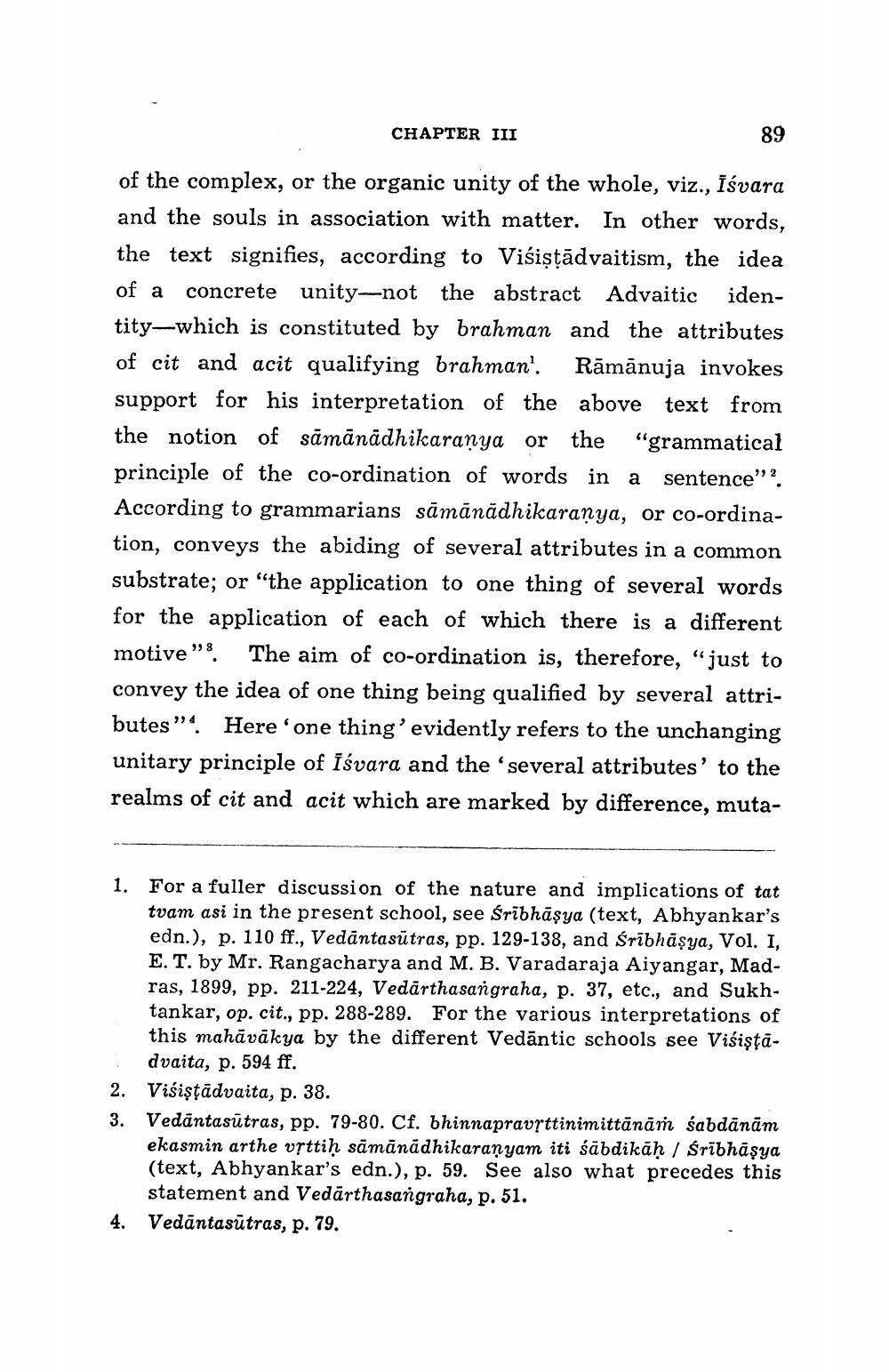________________
CHAPTER III
89
of the complex, or the organic unity of the whole, viz., Isvara and the souls in association with matter. In other words, the text signifies, according to Visiṣṭādvaitism, the idea of a concrete unity-not the abstract Advaitic identity-which is constituted by brahman and the attributes of cit and acit qualifying brahman'. Rāmānuja invokes support for his interpretation of the above text from the notion of sāmānādhikaranya or the "grammatical principle of the co-ordination of words in a sentence" 2 According to grammarians sāmānādhikaraṇya, or co-ordination, conveys the abiding of several attributes in a common substrate; or "the application to one thing of several words for the application of each of which there is a different motive " The aim of co-ordination is, therefore, "just to convey the idea of one thing being qualified by several attributes". Here 'one thing' evidently refers to the unchanging unitary principle of Isvara and the 'several attributes' to the realms of cit and acit which are marked by difference, muta
1. For a fuller discussion of the nature and implications of tat tvam asi in the present school, see Śribhāṣya (text, Abhyankar's edn.), p. 110 ff., Vedantasūtras, pp. 129-138, and Śrībhāṣya, Vol. I, E. T. by Mr. Rangacharya and M. B. Varadaraja Aiyangar, Madras, 1899, pp. 211-224, Vedarthasangraha, p. 37, etc., and Sukhtankar, op. cit., pp. 288-289. For the various interpretations of this mahāvākya by the different Vedantic schools see Visiṣṭādvaita, p. 594 ff.
2.
Visiṣṭadvaita, p. 38.
3. Vedāntasūtras, pp. 79-80. Cf. bhinnapravṛttinimittānāṁ śabdānām ekasmin arthe vṛttiḥ sāmānādhikaranyam iti sabdikāḥ / Śrībhāṣya (text, Abhyankar's edn.), p. 59. See also what precedes this statement and Vedarthasangraha, p. 51.
4. Vedāntasūtras, p. 79.




